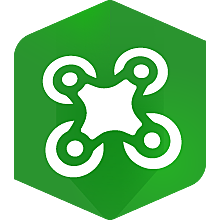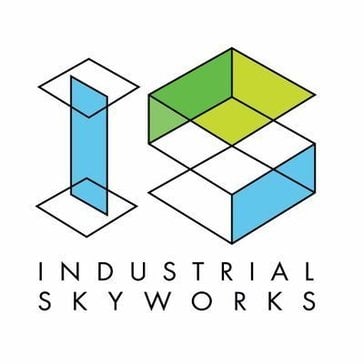Description

ArcGIS Drone2Map

BlueVu

DroneNaksha
Comprehensive Overview: ArcGIS Drone2Map vs BlueVu vs DroneNaksha
ArcGIS Drone2Map
a) Primary Functions and Target Markets:
Primary Functions:
- ArcGIS Drone2Map is designed to process drone-captured imagery to create high-quality 2D and 3D maps. The software supports the generation of orthomosaics, digital surface models (DSMs), 3D textured meshes, point clouds, and more.
- It integrates seamlessly with the ArcGIS platform, allowing users to leverage other GIS tools for analysis and visualization.
Target Markets:
- GIS professionals, urban planners, and surveyors in industries such as agriculture, forestry, transportation, utilities, and natural resource management.
- Organizations that are already using the ArcGIS ecosystem benefit the most since it extends functionalities with drone-captured data.
b) Market Share and User Base:
- As part of the ESRI suite of software solutions, ArcGIS Drone2Map benefits from the widespread market presence of ESRI, which is a prominent player in the GIS sector.
- Exact market share specifics may not be publicly available, but its integration with ArcGIS implies a substantial user base in industries relying on GIS technology.
c) Key Differentiating Factors:
- Tight integration with the ArcGIS ecosystem, allowing for a seamless transition between drone data processing and GIS analysis.
- Backed by the extensive resources and support of ESRI, which offers comprehensive training and community support.
BlueVu
a) Primary Functions and Target Markets:
Primary Functions:
- BlueVu focuses on delivering solutions for processing and analyzing aerial data captured specifically by UAVs.
- It provides functionalities that include data visualization and analytics for drones, aiming to convert aerial data into actionable insights.
Target Markets:
- Industries like mining, construction, and agriculture where accurate site mapping and monitoring are critical.
- Companies looking for comprehensive data analytics post-drone flight, interested in insights rather than raw data processing.
b) Market Share and User Base:
- BlueVu may not have as large a market share as some competitors, primarily due to its more niche focus and smaller scale, targeting specific industries.
c) Key Differentiating Factors:
- Focus on analytics and insight generation rather than just data processing, appealing to users looking for immediate analytical outcomes from their datasets.
DroneNaksha
a) Primary Functions and Target Markets:
Primary Functions:
- DroneNaksha specializes in processing drone-captured imagery to produce maps and spatial models, similar to its competitors.
- It offers functionalities that cater especially to construction project monitoring and infrastructure management.
Target Markets:
- Urban planning, infrastructure development, real estate, and construction.
- Companies in emerging markets which might be looking for cost-effective alternatives with a focus on construction and infrastructure.
b) Market Share and User Base:
- DroneNaksha may have a smaller market share, focusing more on emerging markets in Asia and areas where cost and accessibility are primary concerns.
- It may not have a broad global presence but serves specific niche markets effectively.
c) Key Differentiating Factors:
- Cost-effectiveness and focus on regional markets that may be underserved by larger players.
- Specialization in construction and infrastructure monitoring may offer tailored solutions that appeal to specific customer needs in those sectors.
Overall Comparisons
- Integration:
- ArcGIS Drone2Map is unique in its strong integration with a broader GIS infrastructure, benefiting users already embedded in the ArcGIS system.
- Analytics vs. Processing:
- While Drone2Map and DroneNaksha emphasize processing and modeling, BlueVu focuses on analytics, providing deeper insights directly from data.
- Market Presence:
- ArcGIS Drone2Map likely holds a larger market share due to ESRI's established presence and extensive customer base.
- DroneNaksha may appeal to cost-sensitive markets, while BlueVu attracts specific industries needing insightful analytics over raw processing.
Contact Info

Year founded :
Not Available
Not Available
Not Available
Not Available
Not Available

Year founded :
Not Available
Not Available
Not Available
Not Available
Not Available

Year founded :
Not Available
Not Available
Not Available
Not Available
Not Available
Feature Similarity Breakdown: ArcGIS Drone2Map, BlueVu, DroneNaksha
When comparing ArcGIS Drone2Map, BlueVu, and DroneNaksha, it's important to consider their core functionalities, user interfaces, and any unique features they offer. These three drone mapping software solutions cater to different user needs but share some similarities in their basic offerings.
a) Core Features in Common
-
3D Mapping and Modeling:
- All three software solutions provide capabilities for creating 3D models from aerial imagery. This includes transforming 2D images into 3D point clouds, meshes, and textured models.
-
Orthomosaic Generation:
- Users can generate high-resolution orthomosaics, which are essential for precise mapping and analysis purposes.
-
Geo-referencing:
- They allow for the geo-referencing of imagery to create accurate maps that integrate seamlessly with other GIS data.
-
Measurement and Analysis Tools:
- Tools for conducting measurements (distances, areas, volumes) are standard across these platforms, crucial for various applications like construction and agriculture.
-
Data Export Options:
- All provide flexible data export options, allowing users to export maps, models, and other outputs in various formats suitable for different GIS applications.
b) User Interface Comparison
-
ArcGIS Drone2Map:
- Integrates with the wider ArcGIS ecosystem, providing a familiar interface to existing ArcGIS users. It offers a streamlined and professional interface focused on ease of use for complex GIS tasks, with straightforward workflows for data processing.
-
BlueVu:
- Known for its user-friendly interface, BlueVu emphasizes simplicity and accessibility. It likely features intuitive dashboards that guide new users through the process of importing data and generating maps without requiring advanced GIS experience.
-
DroneNaksha:
- Likely tailored for localized usage, potentially offering language support and regional settings to suit specific markets. Its interface might focus on providing quick access to mapping functions with an emphasis on usability for field operations.
c) Unique Features
-
ArcGIS Drone2Map:
- Integration with ArcGIS: Direct integration with ArcGIS Online and ArcGIS Enterprise for sharing and collaboration, which can be a significant advantage for organizations already using the ESRI ecosystem.
- Advanced Analytics: Provides access to powerful analytics and visualization tools from the ArcGIS suite, enhancing its capabilities beyond basic mapping.
-
BlueVu:
- Real-time Processing: Offers features for faster processing and analytics, potentially enabling real-time data insights, which can be crucial for time-sensitive operations.
- Customization Options: May provide specific tools for custom workflows tailored to industries like agriculture or mining.
-
DroneNaksha:
- Localized Focus: Possibly provides features tailored to specific regional needs, such as compliance with local mapping regulations or integration with local geospatial data sources.
- Cost-Effectiveness: Might be positioned as a more affordable solution with competitive pricing, especially appealing to small to medium-sized enterprises in specific geographic areas.
In summary, while there are core features shared across ArcGIS Drone2Map, BlueVu, and DroneNaksha, each has its strengths and unique features that cater to different segments of the GIS and mapping user base. User interface preferences and integration capabilities can significantly influence the best choice for a specific user or organization.
Features

Not Available

Not Available

Not Available
Best Fit Use Cases: ArcGIS Drone2Map, BlueVu, DroneNaksha
ArcGIS Drone2Map, BlueVu, and DroneNaksha are all software solutions designed to process and analyze aerial imagery captured by drones. While they share some similarities, each has specific features and strengths that make them suited to particular use cases and industries. Here’s an overview of the best fit use cases for these products:
a) ArcGIS Drone2Map
Best Fit Use Cases:
- Enterprises in Geospatial Industries: Organizations with existing ties to Esri’s ArcGIS ecosystem will benefit most because Drone2Map integrates seamlessly with other Esri software.
- Urban Planning and Development: It is ideal for urban planners needing detailed mapping for land use and infrastructure planning.
- Environmental Monitoring: Useful for conservation groups that track changes in landscapes or monitor natural resources.
- Agriculture: Farmers or agricultural analysts can use it for crop health monitoring and land management.
Catering to Industry Vertical/Company Size:
- Large Enterprises and Government Agencies: Its integration capabilities and advanced GIS functionalities make it suitable for larger operations with comprehensive geospatial needs.
- Consulting Firms: Companies providing GIS consulting services will find it a beneficial addition to their toolset.
b) BlueVu
Best Fit Use Cases:
- Aerial Surveying and Mapping Firms: BlueVu is tailored for companies focused on generating high-quality maps and 3D models from drone imagery.
- Oil and Gas Industry: Particularly useful in inspecting and managing remote infrastructure like pipelines and rigs.
- Construction Management: Allows for detailed site monitoring and progress tracking, ensuring compliance and safety measures are met.
Catering to Industry Vertical/Company Size:
- SMEs in Specific Industries (e.g., Civil Engineering): Its specialized tools appeal to businesses that require precise mapping and measurement capabilities but may not need the broader GIS integration.
- Specialized Surveying Firms: Particularly those that don’t necessarily need extensive GIS functionalities that solutions like ArcGIS provide.
c) DroneNaksha
Best Fit Use Cases:
- Local Government and Municipalities: For planning and cadastral mapping tasks, especially within regions specific to DroneNaksha’s operational area or capabilities.
- NGOs and Non-Profits: Organizations working on land management, environmental conservation, and small-scale urban projects.
- Educational and Research Institutions: Its focus on ease of use and cost-effectiveness can make it suitable for educational purposes or budget-constrained research projects.
Catering to Industry Vertical/Company Size:
- Small and Medium Enterprises and Local Governments: With a tighter budget, these users can leverage DroneNaksha’s tools for essential mapping and monitoring without extensive financial outlay.
- Resource-Constrained Projects: Ideal for organizations needing basic to intermediate level geospatial analysis.
Summary:
Each software provides distinct capabilities that align with specific needs based on integration requirements, industry focus, and project scale. Large organizations with comprehensive GIS needs might opt for ArcGIS Drone2Map. BlueVu caters to specialized mapping and surveying, particularly in technical fields like construction and oil and gas. In contrast, DroneNaksha is suitable for smaller, tightly-budgeted projects that still require robust aerial data analysis.
Pricing

Pricing Not Available

Pricing Not Available

Pricing Not Available
Metrics History
Metrics History
Comparing undefined across companies
Conclusion & Final Verdict: ArcGIS Drone2Map vs BlueVu vs DroneNaksha
When evaluating ArcGIS Drone2Map, BlueVu, and DroneNaksha, it's essential to consider several factors such as functionality, ease of use, integration with other tools, customer support, and pricing to determine the best overall value for users.
a) Best Overall Value
ArcGIS Drone2Map offers the best overall value for users, particularly those who require robust geospatial processing and integration with other GIS tools. As part of the Esri suite, it provides seamless integration with ArcGIS Online and ArcGIS Pro, enhancing its value for users invested in Esri's ecosystem.
b) Pros and Cons
ArcGIS Drone2Map
- Pros:
- Seamless integration with Esri’s GIS ecosystem.
- Robust geospatial analysis tools and features.
- Comprehensive support and documentation.
- Regular updates and enhancements.
- Cons:
- Higher cost, particularly for users not requiring extensive GIS capabilities.
- Potentially steep learning curve for users unfamiliar with Esri products.
BlueVu
- Pros:
- Intuitive interface that is user-friendly for beginners.
- Focus on quick processing and visualization of drone data.
- Affordable pricing, making it accessible for smaller teams or individual users.
- Cons:
- Limited advanced geospatial capabilities compared to ArcGIS Drone2Map.
- Less robust integration options with other GIS tools.
- Potential limitations in scalability for large enterprises.
DroneNaksha
- Pros:
- Strong focus on localized applications and customization.
- Competitive pricing with modular package offerings.
- Effective for users with specific needs in mapping and surveying.
- Cons:
- Lack of advanced features for high-level geospatial analysis.
- Limited recognition and support compared to more established brands.
- May not support as many data formats or third-party integrations.
c) Recommendations
- For users committed to Esri’s product ecosystem: ArcGIS Drone2Map is the logical choice, offering synergies with existing GIS workflows and data management systems.
- For small businesses or individual users needing quick and simple drone data processing: BlueVu provides a straightforward and cost-effective solution without overwhelming features.
- For users in regions where localized support and customization are crucial: DroneNaksha might be the best fit, particularly if their geographical and technical needs align with its strengths.
Ultimately, users should align their choice with current needs, skill levels, and existing technology environments. Consider trialing each product, if possible, to better understand how each aligns with specific operational goals and expectations.